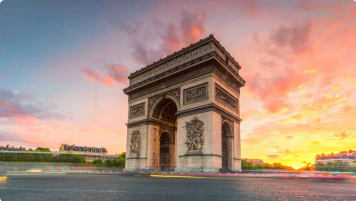Learning about Ireland | Travel tips for Seniors
Learn about Ireland the place before you join an escorted small group tour for mature and senior travellers to the Emerald isle. Our client profile is couples and also for single senior tours of Ireland.
1 Jun 20 · 16 mins read
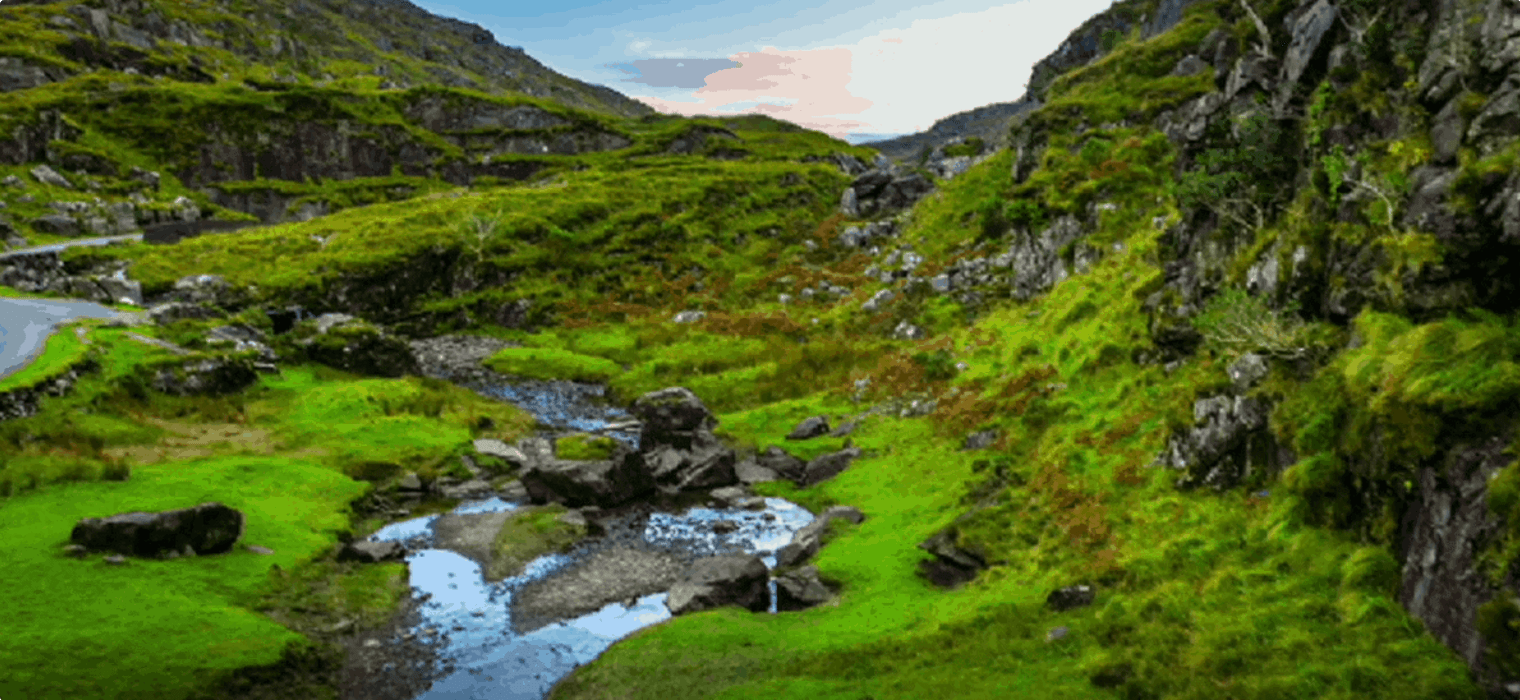
Learning about Ireland for Seniors
Since 1983 Odyssey traveller has been offering escorted small group tour to mature and senior travellers around the World. One of the best destinations we tour each year is to Ireland. Our client profile is couples and also for single senior tours of Ireland. Odyssey’s small group tour is a coach tour of typically 6 -14 travelers of couples and single traveller (s) taking a trip around the emerald isle. This escorted tour with a tour leader, leads the group tour on a day tour collection into Southern Ireland from Dublin to Glendalough in the National park network of Ireland, the Dingle peninsula, to Killarney, the wild Atlantic way and Aran islands and the spectacular scenery of this coastline including Moher. The guided tour continues on to explore Northern Ireland typically finishing in Belfast. And today, many a Ireland tour will include a visit to the Titanic Belfast exhibition, though on an Odyssey small group tour we also seek to provide a guided tour experience that enables you to discover Ireland through the local guide engaged to share their stories with you on your trip.
In order to uncover the treasures of Ireland, you must connect its rich heritage with its physical beauty. Explore geological wonders and natural history at the magnificent Cliffs of Moher and Slieve League or the karst land of the Burren. Take a literary walk through Dublin to experience the city’s art and culture. Feel the presence of religion at the ‘Seven Churches’ on Inis Mor Islands and the pilgrimage sites of Knock and Glencolmcille. And visit the incredible clifftop fort of Dun Aengus to deepen your understanding of Ireland’s history and Irish culture. Of course, you must also seek out the mythology and folklore of this unique country. Kiss the Blarney Stone at medieval Blarney’s Castle or scale the spectacular basalt pillars that make up Giant’s Causeway. Learning about Ireland is best discovered by immersing yourself into the very qualities that make it special. We are offering guided sightseeing tours of Ireland for seniors 2022, our guided sightseeing tours of Ireland for seniors 2021 where cancelled.
Odyssey Traveller tours of Ireland for Seniors
Odyssey’s Treasures of Ireland small group tour commences in Dublin, before crossing to Killarney in County Kerry. We explore the Dingle Peninsula and the famous Ring of Kerry. We travel north, via the Burren and the Cliffs of Moher, to County Galway. From here we visit Connemara National Park and the romantic Abbey of Kylemore before taking a ferry bound for Inis Mor, the largest of the Aran Islands. Our journey then takes in the North West Ireland itinerary and the stunning scenery across to the Atlantic coast. Continuing along the west coast of this Ireland road trip to the North west via County Silgo and Sligo to Glenties in County Donegal and Donegal Town. The North west Ireland itinerary explore the heritage of this north west corner of Ireland before heading east via the Giant’s Causeway along the causeway coastal route towards Belfast. We stay a night in each of the historic towns of Derry and Belfast.
This thorough program includes activities for immersive learning. There are talks by informed speakers, contact with nature on our walks, visits to a host of monuments and other diverse historical sites, and interaction with the Irish people on this Ireland itinerary.
If you wish to learn more about Ireland, read on. We cover Ireland’s climate and spectacular geomorphology first, followed by its rich and complex history. Later, we will include details of what sets our small group tours apart.
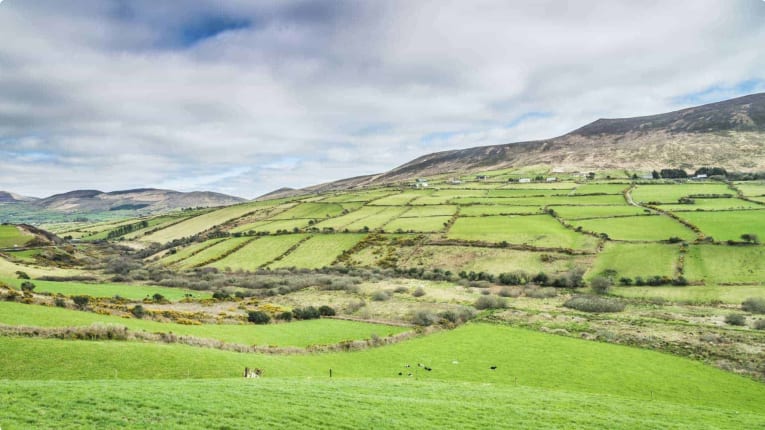
Understanding Ireland
Ireland sits among the ‘British Isles’, to the west of Great Britain across the Irish and Celtic Seas. Its jagged western coastline faces the Atlantic Ocean. It lies closer to the Polar regions than any parts of Australia or New Zealand.
Ireland consists of two political units, the Republic of Ireland and Northern Ireland. Northern Ireland is a part of the United Kingdom. Great Britain refers to the island on which England, Wales and Scotland are found.
The Climate
Strong oceanic influences, particularly the Gulf Stream, determine the generally mild temperatures and wet climate experienced by most of Ireland. Warmed in the tropics, ocean water flows north from the Gulf Stream and the North Atlantic Drift onto the southern and western coasts of Ireland. This warm water also affects the air masses blowing over the ocean and onto the island.
Polar maritime air masses from the northwest pass over the relatively warm sea and are thus rendered unstable and moist. The resulting turbulence is responsible for gusty winds, showers and broken cloud in all seasons of the year. Arctic and Continental air masses may bring snow in winter but for most of Ireland, the average is less than ten days when snow actually lies on the ground. There are, for example, fewer than ten days of frosts on average for most of County Kerry in the south-west. This is the warmest part of Ireland. Ireland’s average maximum temperature is 5°C during winter, and 15°C in the summer.
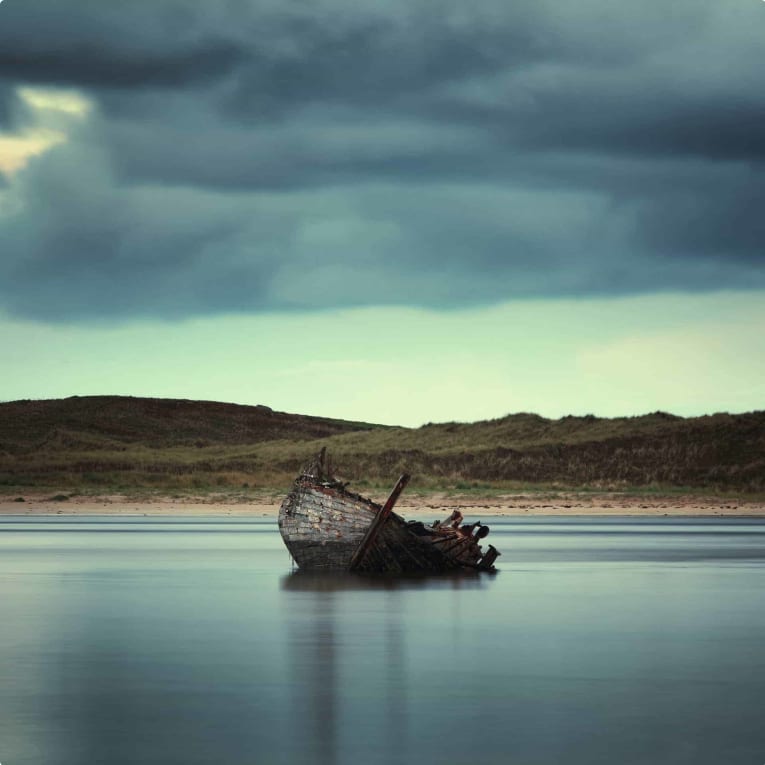
Rainfall
1,080 millimetres is the average precipitation with 80% of all Ireland receiving between 762 millimetres and 1,270 millimetres per year. The wettest parts are in the highest and most western locations and the elevated parts of the west of Ireland average as many as 2,400 millimetres per year. Most of the west of Ireland (including counties Donegal, Sligo, Mayo, Galway, Clare, Limerick and Kerry) has more than 250 rain days per year, whilst the rest of the island has between 200 and 250 rain days. A very small area around Wexford is the only area to average less than 200 rain days!
Geology & Geomorphology
Another factor contributing to the mildness in temperature is the lack of high mountains. Less than one-fifth of Ireland has an elevation of higher than 150 metres. The highest point is Carrantouhill, 1041 metres, located in the central part of the Ring of Kerry. By way of contrast, the average elevation of Australia is about 300 metres, the highest point being 2,226 metres. New Zealand’s highest point is 3,754 metres. Maximum depth of the Irish Sea is 180 metres, however 50 kilometres to the west of Ireland the sea bed plunges to 2,400 metres and more in the eastern Atlantic.
The oldest rocks are Pre-Cambrian (older than 570 million years) and are usually schists and other well-folded rock of mainly igneous or metamorphic origin. These ancient rocks are seen in NW Ireland, for example, near Glenties. In fact, they are of similar origin to most of the Scottish Highlands: the geology in this part of Ireland is a continuation of the southern uplands of Scotland.
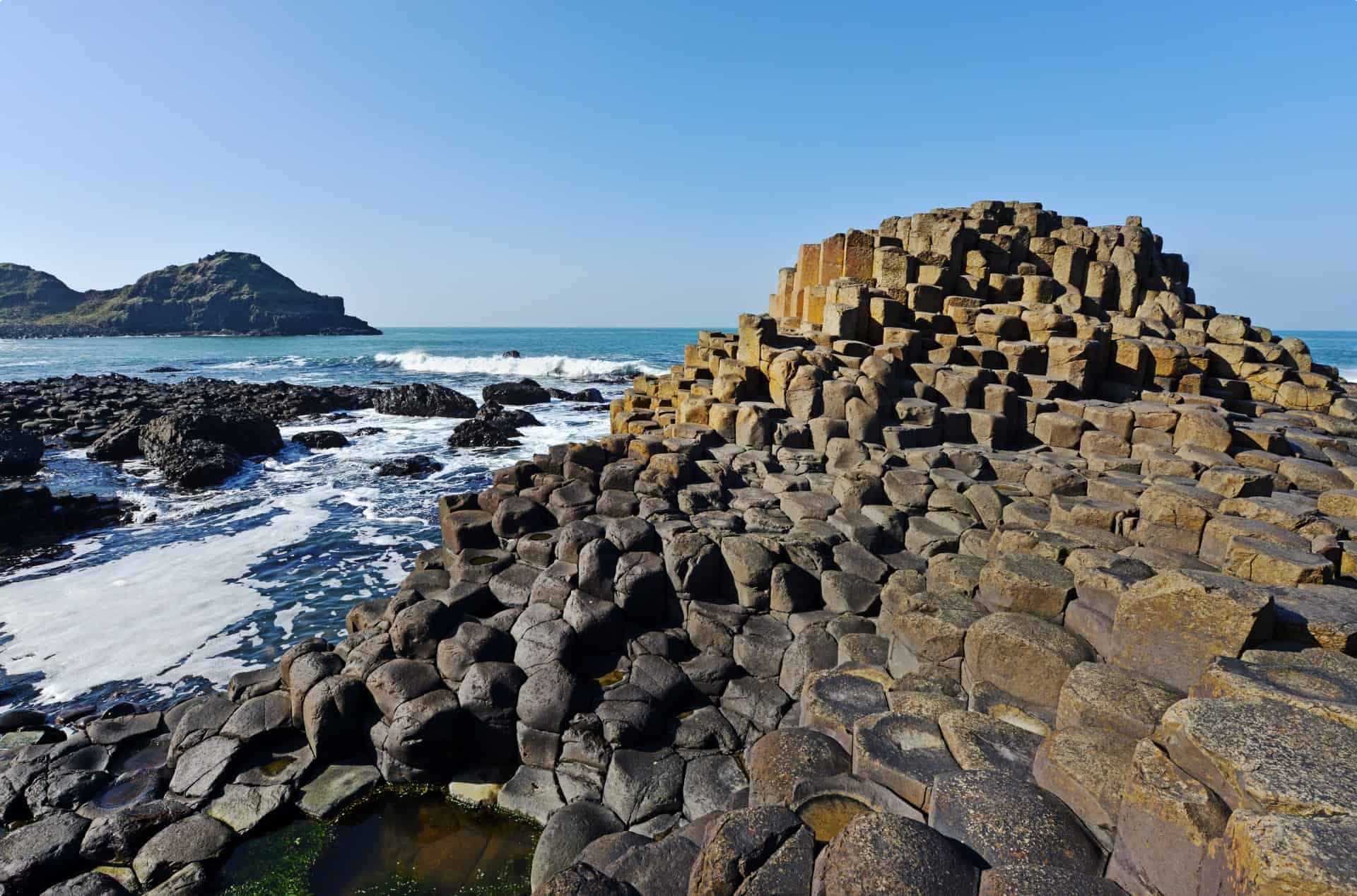
Basalt flows and Giant’s Causeway
Also found in the north are extensive areas of horizontal basalt flows of Tertiary age (between 2 and 63 million years ago) such as the Antrim Plateau. Not only has this volcanic rock given rise to rich soils, but its cooling structure is seen at Giant’s Causeway where the dramatic geometrically-shaped basalt columns have been exposed by the sea to produce a landform that has captured the imagination of many cultures.
Amazing limestone landscapes
Much of the midlands of Ireland is composed of surface sedimentary rocks of Palaeozoic age (between 230 and 570 million years ago). Slates, shale and sandstone are common in the oldest of these beds. Those rocks laid down later in the Carboniferous period (within the Palaeozoic between 280 and 354 million years ago) are commonly limestone and are fairly widely represented. One of the most dramatic expressions of a limestone-dominated landform is the Burren in County Clare and the landscape of Inis Mor in the Arans where horizontally bedded limestone is seen as bare limestone pavement along with a wide range of Karst features (caves, dolines, sinkholes, dry valleys and, in world-wide terms, an extremely large polje). A granite batholith forms the core of the Wicklow Mountains south of Dublin, extending down the east coast into County Wexford.
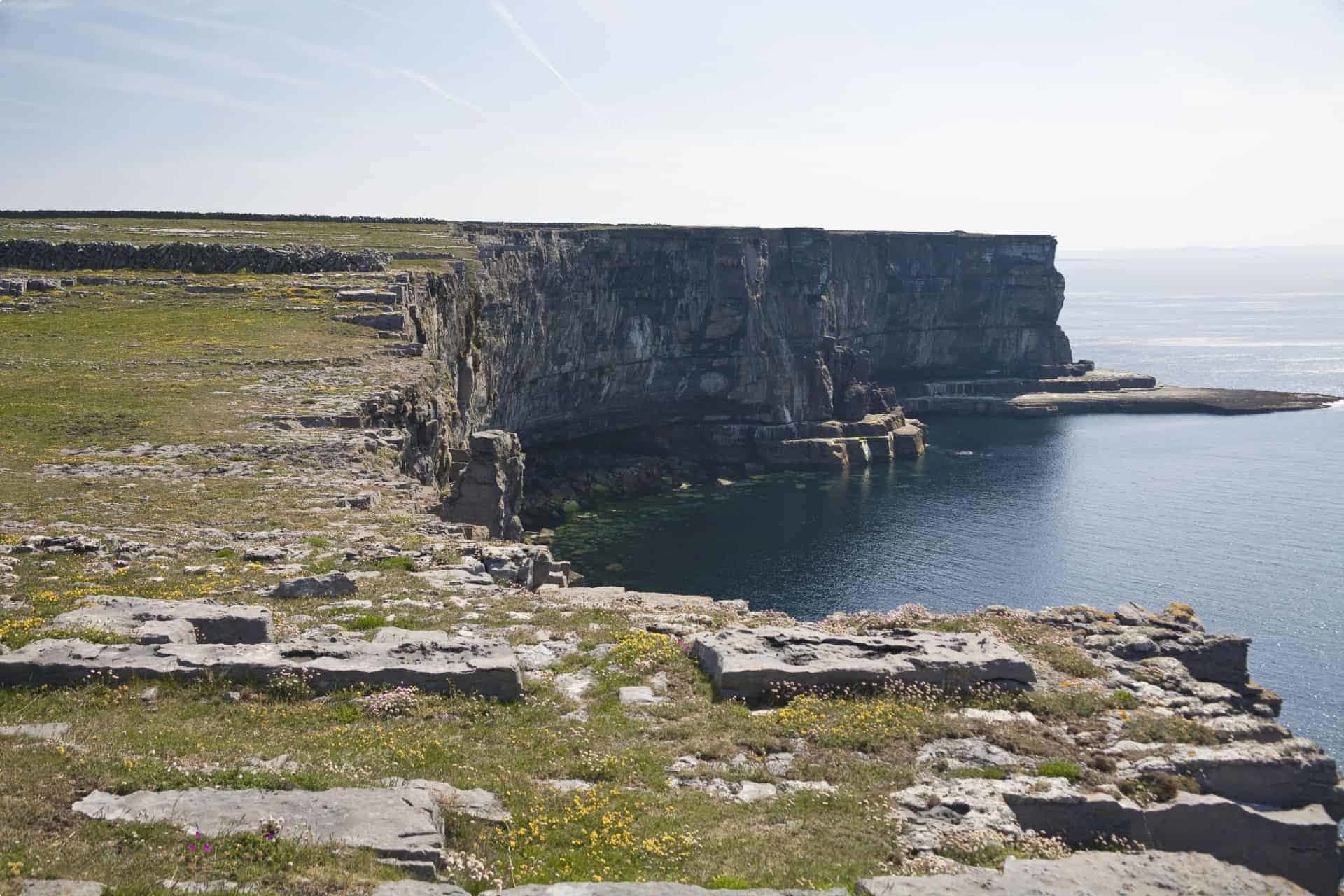
Sculpted by the Ice Age
Most of Ireland’s landforms were sculpted by moving ice sheets or glaciers during and following the peak of the last Ice Age some 23,000 years ago. The U-shaped valleys and eskers or gravel ridges of the lowlands, for example, are a direct result of ice movement and weathering and the subsequent deposition associated with glacial melting. In central Ireland the ice sheets dropped drift (sand, silt, clay and boulders), the basis for most current soils. Many of the lakes in the uplands are cirques or corries – these owe their origin to the gouging action of ice.
Several other landforms we see are the remnants of glacial deposition. Drumlins are the most common and they may be found as swarms of streamlined hills composed of glacial till. They vary in height from 7 to 60 metres and in length from tens of metres to many kilometres. A belt of drumlins stretches across Ireland from Sligo Bay to County Down on the northeast coast. Many ill-drained areas owe their origin to glacial drift deposits which have restricted water-flow into streams. Many of these situations have provided a suitable habitat for the growth of patches of raised bogs and the formation of lakes.
The Ice Age which developed many of these landforms came to a rapid halt some 14,000 years ago only to be followed by another freeze that ended about 11,000 years ago. After this time temperatures began to increase, ice melted and re-colonisation by plants and animals began. Humans were still 6,000 years away from Ireland.
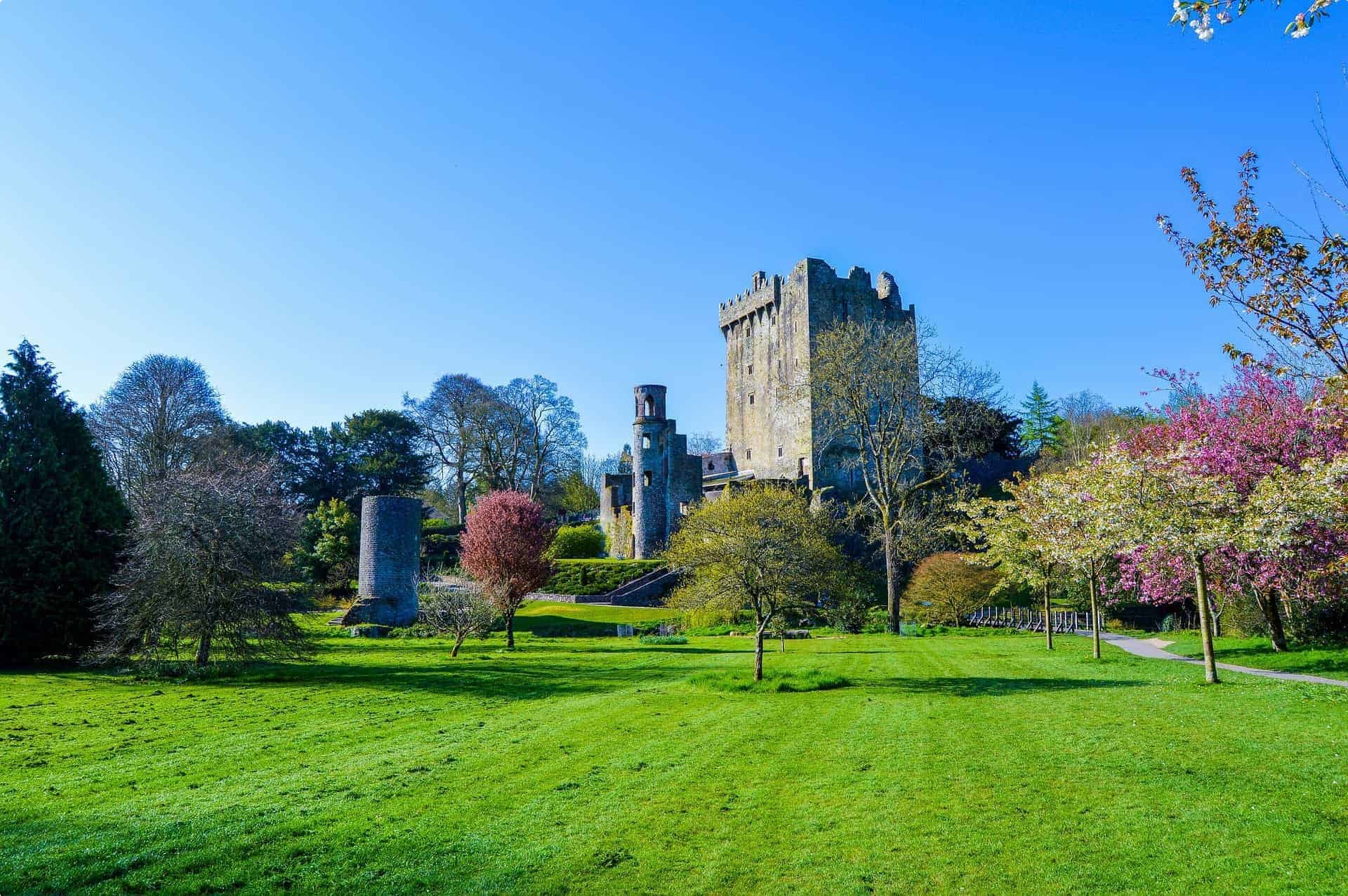
Ireland’s heritage
Ireland’s population, settlement and its changing political scene have produced a heritage that is both rich and visible.
Stone Age farmers came to Ireland over 5,000 years ago by way of a land bridge from Scotland. Temperatures then were some 2°C warmer than today. The bog plant communities which formed the extensive peat areas of recent times had not yet started to form. This latter process began when the climate cooled about 3,000 years ago. Some of the remains of this early culture are the Court Tombs and associated stone tools. Another wave of immigrants from central Europe, later Stone Age farmers, have left Portal Tombs as evidence of their occupation.
The arrival of the Celts
The Iron Age brought the Celts to Ireland. Celts held sway in Europe from the Balkans to western Ireland. When they started to arrive in Ireland around about 700 – 500 BC, they easily assimilated with the bronze-armed inhabitants. As farmers, the Irish Celts raised cattle. The last of their migratory waves arrived about the time of the birth of Christ. Celtic myths and legends, the Brehon Law system and their ancient language remained strong until about 200 years ago. Their pagan rites, however, were effectively replaced by Christianity by the eighth century.
Roman occupation and influence dominated France and England during this period. However, the Romans did not cross the Irish Sea to conquer even though they coined Ireland’s Latin name of Hibernia (the winter place). Yet Rome’s influence was felt as a result of human traffic between the two islands, by trading and raiding, and, of course, Christianity.

Christianity
Christianity reached Ireland around 400 AD. However, most of the credit for converting the Irish goes to St Patrick, who did not begin his ministry until 432. A couple of generations saw Christian monasteries established and in them, a flowering of art and scholarship. Within a century of Patrick’s death around 462, Irish missionaries had reached the islands of western Scotland and began converting the Picts, Scots and Britons, and eventually the Angles. In 563 St Colmcille (Columba) arrived from Ireland and set up a base in Iona for his ministry in Scotland. He was one of a number of Irish Saints and monks to influence the Scottish pagans and those further afield in Europe during the Dark Ages.
Irish church scholars actively recorded Celtic history and copied down the Celts’ myths and legends and poetry. The greatest product of the Irish monastic scene was the Book of Kells, dating from the end of the eighth century. This 340-page book of the four Gospels was scribed in Latin by monks and is the most richly illustrated of the Irish illuminated manuscripts. It was probably begun at Iona in Scotland, brought to a monastery in Kells, County Meath, then held in the parish church. It was finally taken to the Dublin Trinity College Library for safe-keeping during the destructive Cromwellian period.
The Age of Invasion: the Vikings
At the end of the 8th century, Vikings began their raids in Ireland, meeting no concerted national resistance. Round Towers, which date from this era are now thought to have been used as bell-towers or visible markers for pilgrims. We also see the establishment by the Vikings through the 800s and 900s of settlements and trading centres that today have become the cities of Dublin, Waterford, Wexford, Cork, Limerick and Galway.
Eventually, Brian Boru attempted to oust the Vikings. A regional king from West Clare, Boru had made himself High King of Ireland from 1002. Viking influence was contained after 1014 when Boru defeated a combined Irish-Viking army at Clontarf just outside Dublin.
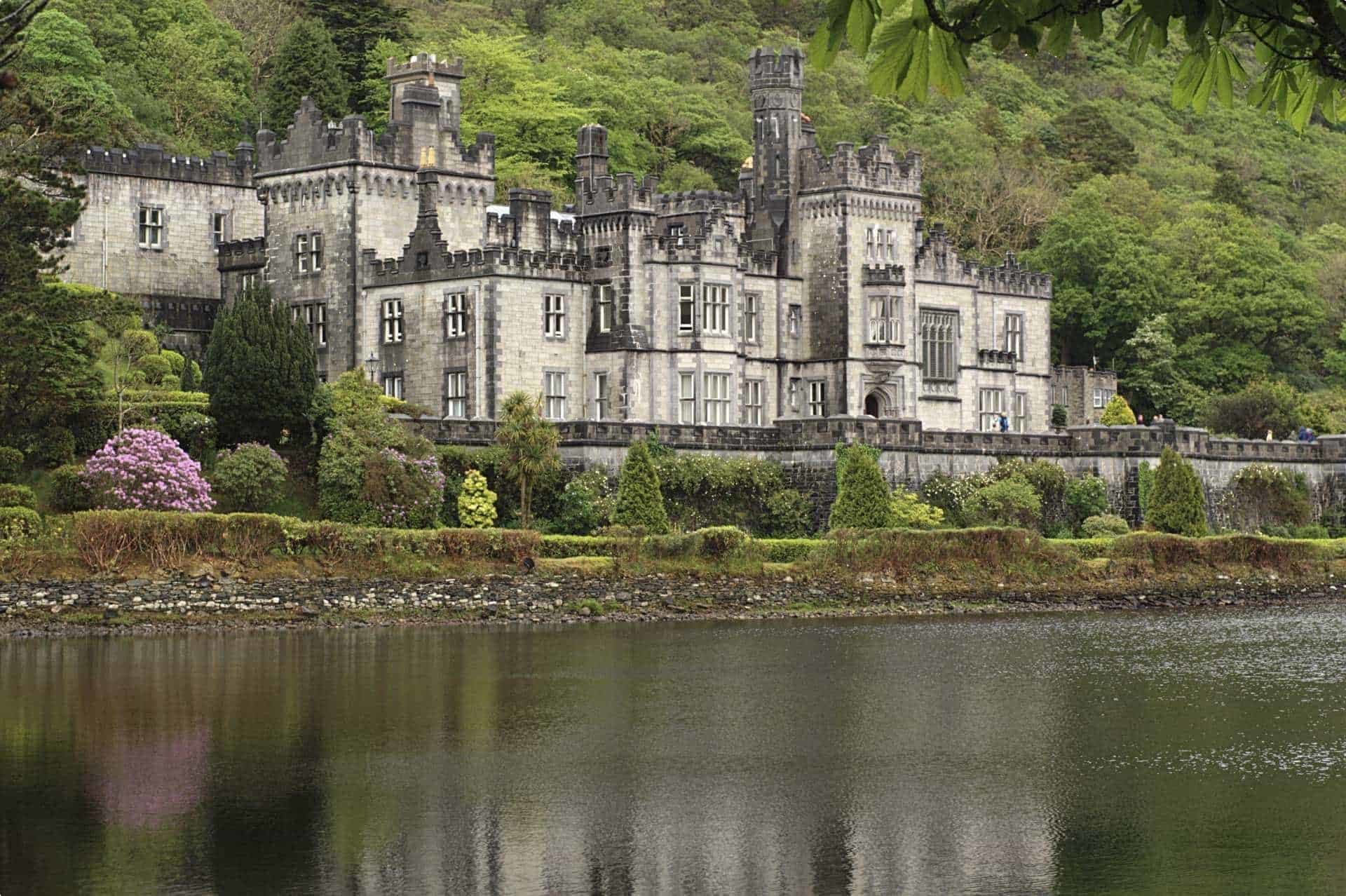
The arrival of the Normans
150 years later, from 1169, came the Normans. Their incursions, according to historian Robert Kee, started the conflict between Ireland and England. Many of these people intermarried with the Irish and assimilated Irish practices, a situation that worried later rulers like Henry VIII and Elizabeth I. Today we can recognise this Norman-English Irish group by their small castles (Tower Houses and Pale Castles, especially those built between 1400 and 1600).
The Normans began a steady takeover of land under Henry II, leading to dominance of government under the Plantagenets and prescription of religion by the Tudors, Henry VIII and Elizabeth I. Not that the Irish did not resist or react – great violence was done on both sides. However as a result of the Reformation, the Plantations and persecution, land ownership was gradually lost by the Irish to English and Scottish settlers.
The Tudor Re-Conquest
The turning point was Elizabeth I’s determination to establish Tudor rule throughout the country. Ulster’s Hugh O’Neill realised that, despite earlier good relations with the Crown, his chiefly status and Catholic faith were not going to be acceptable and that he could be implicated in plots against English rule. O’Neill, the Earl of Tyrone, and Rory O’Donnell, Earl of Tyrconnell (see Donegal castle), led a national uprising (supported by the Spanish) between 1594 and 1603. After its collapse, the Earls, along with many other leaders, left Ireland in 1607 for the Continent in response to English domination. This is known as ‘The Flight of the Earls’. Both Earls died overseas.
Elizabeth began, and the Stuarts continued, the process known as ‘The Plantations’, especially of the six Ulster counties that are modern Northern Ireland. Their aim was to stabilise the English government and economy in Ireland. The Plantations of Ulster bequeathed a majority Ulster-Scot population that is mainly Presbyterian amidst a largely Catholic minority.
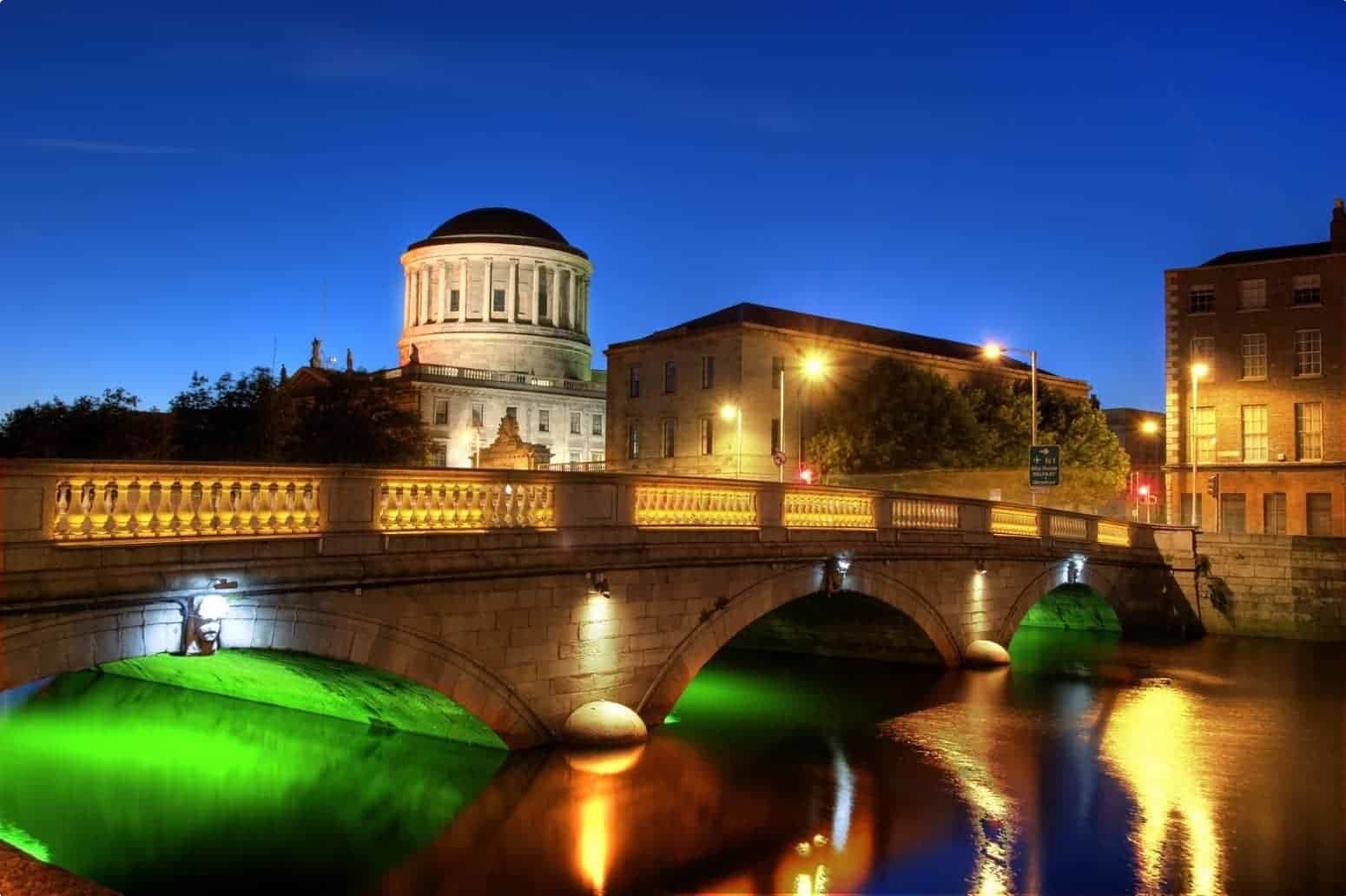
18th & 19th Centuries
The war between James II and William III settled Ireland’s fate by 1691. For a century or more (known as the Penal Era) Catholics were subjected to numerous civil disabilities and land continued to pass into the hands of Anglo-Irish Protestant aristocracy and gentry. At the end of the 1700s Irish radicals, both Catholic and otherwise, began pushing for the independence of Ireland. The resulting 1798 Rebellion, including invasion from Napoleonic France, failed in the attempt.
In 1800 the English dissolved the Irish Parliament and the government moved from Dublin to Westminster. Ireland became part of the United Kingdom, symbolised by the addition of the red diagonal Cross of St Patrick to the Union Flag. Ireland was represented by some 100 members in the House of Commons but none could be Catholic. In 1829, Catholic Emancipation brought to an end most of the penal laws against Catholics.
Lasting legacies
A group of men were famous for maintaining the Irish cause against British rule generally and unfair landlords in particular. Right up till the end of the 1800s, this group included Henry Grattan, Wolfe Tone, Lord Edward Fitzgerald, Robert Emmet, Daniel O’Connell, William Smith O’Brien, Charles Stewart Parnell and Michael Davitt. Of these, Daniel O’Connell, ‘The Liberator’, did most to give confidence to the Irish people by demonstrating the power of collective opinion. Evidence of his fame is everywhere.
Likewise, evidence of the Great Famine of 1845 – 1852 is also everywhere. This cataclysm resulted from successive failures of the potato crop due to fungal disease (Late or Irish Blight caused by Phytophthora infestans) combined with inadequate government assistance to alleviate starvation and disease. The net result was the death of around one million people and the emigration of at least as many, mainly to North America. The trend in emigration continued to the extent that the population in 1900 was half that of pre-Famine days. National population only began to grow again in the 1970s.
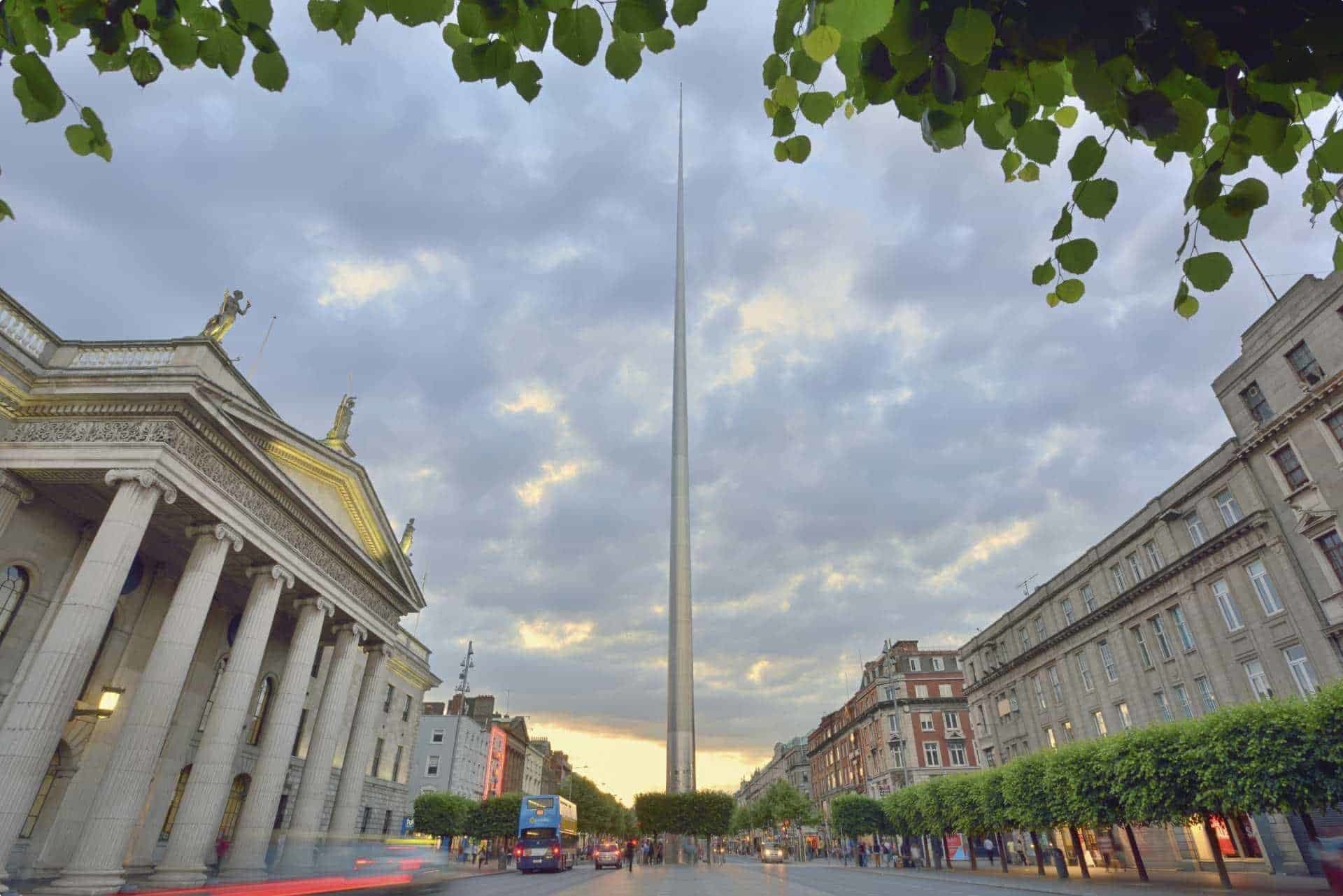
Politicians & Political Events since 1900
Irish nationalism hardened in those hard years, bringing with it various forms of revolutionary action. The modern era, in effect, begins with Sinn Fein, founded in 1904 with the main aim ‘to clear the British out of Ireland, bag and baggage’. Pre-existing groups like the Irish Republican Brotherhood (Fenians) infiltrated Sinn Fein as well as cultural groups such as the Gaelic Athletic Association and the Volunteers. The latter had been formed in 1913 to protect the passage of the Home Rule Act which would have returned to Dublin a diminished local parliament. By 1914 Sinn Fein had covertly mobilised the nation and the IRB was planning an armed insurrection.
Concerted action against British rule began openly during World War I. The Easter Rising in 1916 saw heavy fighting against British troops in Dublin where action centred on the GPO. Michael Collins, a Sinn Fein leader, was heavily involved in this and subsequent actions in the cause of independence. At the end of the World War, general elections returned a majority of Sinn Fein members. Many were in English gaols and all boycotted the Westminster House of Commons in favour of Dail Eireann (Irish Parliament). The Dail organised military resistance and for two years waged a War of Independence against Britain, ending with the Treaty of 1921. It created a twenty-six-county Irish Free State with Dublin as the capital. It also confirmed the creation of a new state, Northern Ireland, in the six north-eastern counties, with Belfast as its capital. The partition of Ireland tended to confirm the sectarian bias (in jobs, housing and other social services) that was already operating in the north-eastern corner. Dissatisfaction among republicans over this Treaty led to civil war between Irish Free State groups (1922 – 1923). It left alive the republican ideal in the North that, almost ever since, has had a military aspect.
In 1922 the Irish Free State was inaugurated and set about building a distinct nation and a viable economy. A gradual severing of relations with Britain began with the formation of Eire in 1937. It was completed by the unilateral declaration of the Republic of Ireland in 1948.

The Last Half Century
The border between north and south caused ongoing friction. It was not only because the north was part of the UK, but also because of the dominance that Protestants there wielded over local Catholics. This situation encouraged the reformation of the Irish Republican Army (IRA). It also fueled old and new differences between the most vocal Protestant group, the Unionists, and the Catholic Nationalists. Since 1969, these tensions intensified in Northern Ireland into ‘The Troubles’, as these war-like conflicts are called. Differences of opinion persisted between Unionists and Republicans, and between both these groups and successive Irish and British governments
On 8 May 2007 a new era of power-sharing came into being in Northern Ireland. Devolution was restored to the Northern Ireland Assembly following the election of a four-party executive of 12 ministers. Old enemies Rev Ian Paisley and Martin McGuiness were sworn in as First Minister and Deputy First Minister respectively. Under this new arrangement, Paisley’s Democratic Unionists headed four ministries while Sinn Fein had three. Significantly, all new government ministers took an oath of office that required them to ‘uphold the rule of law based as it is on the fundamental principles of fairness, impartiality and democratic accountability, including support for policing and the courts’. Peter Hain, Secretary of State for Northern Ireland at the time, summed up the situation as follows: “These implacable foes have individually and collectively said that now is the time for Northern Ireland to move forward into a new era. They have together taken charge of the process from the British and Irish governments. This is where we have wanted to be since before the Good Friday Agreement was signed almost nine years ago.”
So far, the devolution process has enabled Northern Ireland’s leaders to enact various reforms, including housing, health and environmental issues and, significantly, on 5 February 2010, they agreed on a ‘roadmap’ and time-line for the devolution of policing and justice powers.

In the past years, the commitment and support of the former British Prime Minister Gordon Brown, the Taoseach of the Republic of Ireland (until recently Brian Cowen) and the former United States Secretary of State Hillary Clinton have been vital factors in the continuation of the still-fragile relationship between the parties. On Odyssey’s Treasures of Ireland tour, we have the opportunity of talking to an eminent historian of Northern Ireland who will update us on the current situation and expectations.
Odyssey Traveller tours to Ireland for seniors
If you are passionate about learning while you travel, you will find a variety of opportunities with Odyssey Travellers Ireland escorted tours. We offer two tours to Ireland with several departures each year. Our Historic Ireland tour has August departures. We also offer a Walking tour of Ireland and England’s Lake District and Gardens of Ireland Small Group Tour. This group tour collection is not only couples but is a single senior tours of Ireland. Whether on walking tour or just to discover Ireland as the first time traveler, this is a destination an Odyssey tour leader will know well and enjoys sharing that knowledge with you on a escorted tour.
We are offering guided sightseeing tours of Ireland for seniors 2021, our guided sightseeing tours of Ireland for seniors 2020 where cancelled.
Odyssey offers a variety of tours to some 80 countries, including in Europe, Africa, and the Middle East. We even run a Summer School series based in Hobart, Tasmania. As long as you remain inquisitive, we continue to design programs to challenge and excite.
About Odyssey Traveller
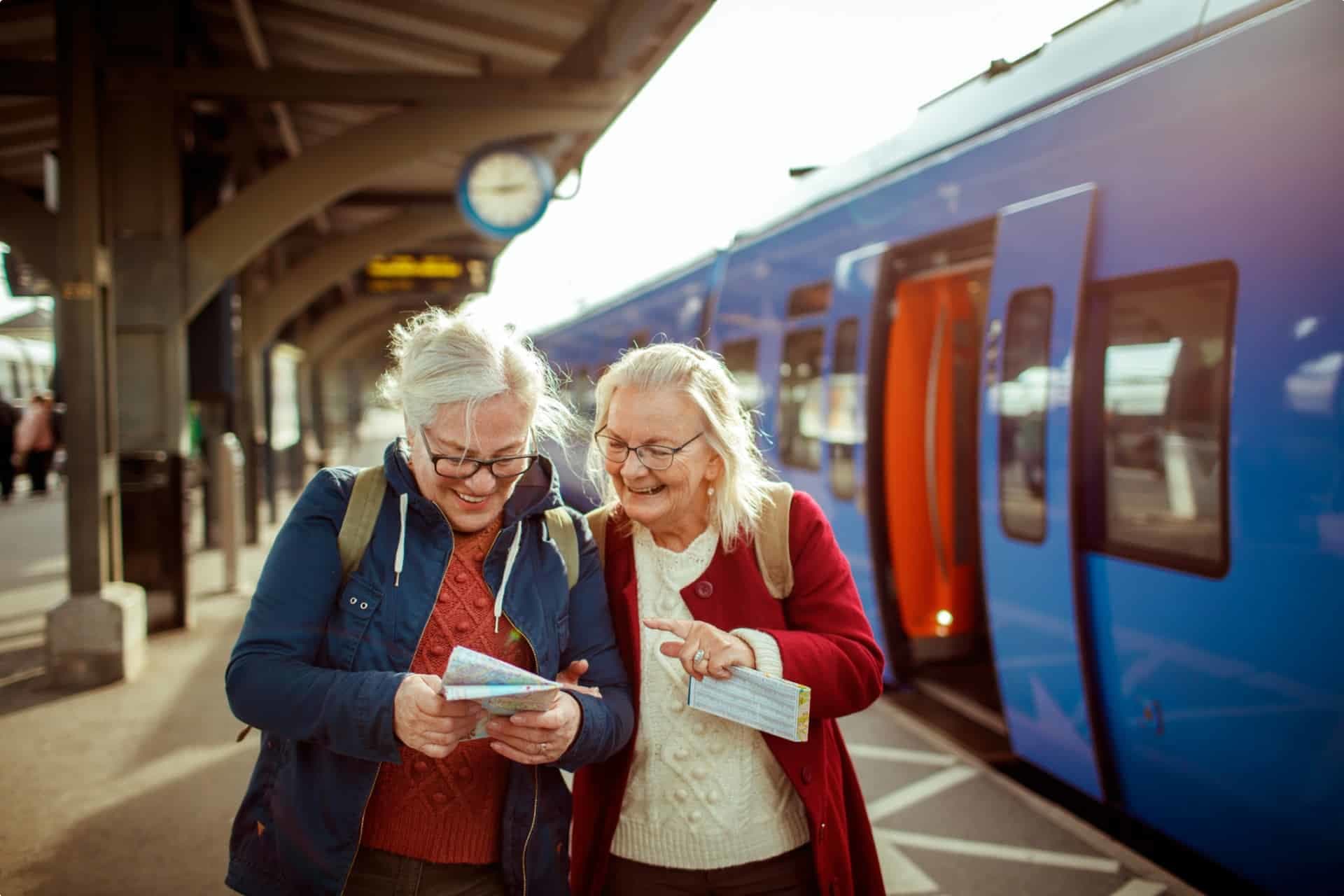
We specialise in educational small group tours for seniors, typically groups between six to 12 people from Australia, New Zealand, USA, Canada and Britain. Our maximum number of people on a tour is 18 mature aged travellers. Typically, our clients begin travelling with us from their mid 50’s onward. But be prepared to meet fellow travellers in their 80s and beyond! Both couples and solo travellers are very welcome on our tours. We have some 150 tours and offer 300 scheduled departures on offer each year. Odyssey has been offering this style of adventure and educational programs since 1983.
Odyssey Traveller is committed to charitable activities that support the environment and cultural development of Australian and New Zealand communities.
Odyssey Traveller scholarship for Australia & New Zealand University students.
We are also pleased to announce that since 2012, Odyssey has been awarding $10,000 Equity & Merit Cash Scholarships each year. We award scholarships on the basis of academic performance and demonstrated financial need. We award at least one scholarship per year. We’re supported through our educational travel programs, and your participation helps Odyssey achieve its goals. Students can apply for the scholarship by clicking on this link to find out more details.
Join our loyalty program when you join an international small group tour.
Every International small group tour taken typically contributes to your membership level in our Loyalty Program for regular travellers. Membership of the alumni starts when you choose to take your first international small group tour with Odyssey Traveller, discounts in tour pricing for direct bookings accrue from your third tour with Odyssey Traveller. To see the discounts and benefits of being a Bronze, Silver, Gold, and Diamond alumni member with us, please see this page.
For more information on Odyssey Traveller and our educational small group tours, visit and explore our website, and remember to visit these pages in particular:
- Terms and conditions applicable for booking an Odyssey Traveller tour.
- FAQ’s about Odyssey Traveller
Alternatively, please call or send an email.
Related Tours
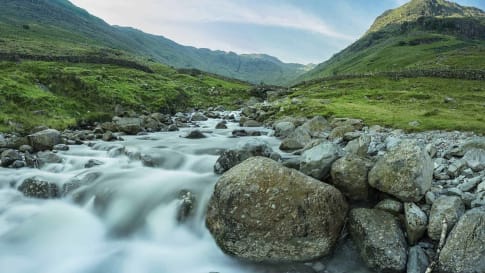
25 days
AugIreland and Lake District walking small group tour
Visiting England, Ireland
A guided small group tour for senior walkers that starts in the capital of Ireland, Dublin. This escorted tour with local guides also explores the Giant's causeway, a UNESCO World heritage site. It transfers from Ireland to Scotland to head to walk in the National park of the Lake district.
From A$15,595 AUD
View Tour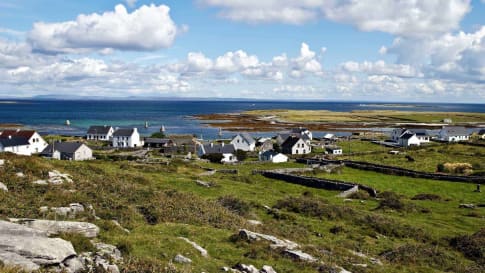
18 days
Aug, Apr, SepSmall Group tours exploring the Treasures of Ireland
Visiting Ireland
An escorted small group tour to Northern Ireland & Ireland, with local guides and itineraries that give authentic experiences Ireland's capital, Dublin, including 1/2 day tour of St Patricks cathedral and Trinity college. Destinations also Aran islands , Kerry plus the world heritage site, the giant's causeway. Ireland tours for singles over 50 and couples.
From A$14,245 AUD
View Tour10 days
MayGardens of Ireland Small Group Tour
Visiting Ireland, Northern Ireland
Ireland a land of diverse and rich gardens from the dramatic Powerscourt to the impressive kitchen Garden of Kylemore Abbey and the secretive Anne’s Grove. Visit Dublin's historic Botanic Garden to the greenness of Killarney with its rugged Kerry peninsula and charming Muckross House.
From A$9,445 AUD
View TourArticles about Ireland
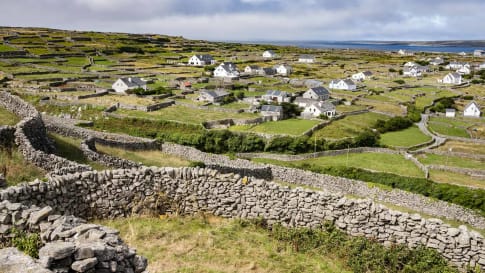
Aran Islands, Ireland
The Aran Islands, Republic of Ireland - not to be confused with the Isle of Arran in Scotland - are a rugged archipelago in Ireland's wild Atlantic, visible from the west coasts of County Galway and County Clare

Cork, Ireland
County Cork, in the south-west corner of Ireland, is the largest county by area, home to Ireland's second-biggest city, Cork. Known as the 'Rebel County', Cork has always had a fiercely independent streak.

Dublin, Ireland
Famed for poets, playwrights, and pubs, Dublin is a city of contrasts: home to some of the English language's greatest writers, the city is also known for its down-to-earth pub culture; the heart of modern, prosperous Ireland.

Galway, Ireland
Galway is centre of traditional Irish culture, home to the country's largest Gaeltacht (Irish-speaking) region, on the Connemara Peninsula and the Aran Islands.

History of Ireland: The Definitive Guide for Senior Travellers
History of Ireland Ireland (Irish: Éire) is an island carved into two after centuries of subjugation, foreign domination, and various conflicts that lasted until the 20th century. In this post, we will look at the riveting…

Kerry, Ireland
Lakes, mountains, wild Atlantic beaches: County Kerry is a highlight of any tour of Ireland, packing some of the world's most spectacular scenery into a small area for Odyssey Travellers to explore on a small group tour.

